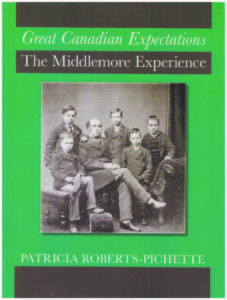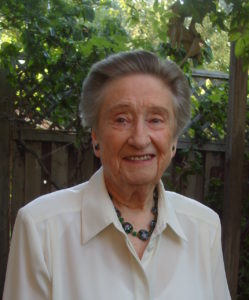Middlemore Homes introduced British children into Canadian homes between 1869 and 1948

June Coxon
For almost 100 years thousands of homeless children were sent from England to some then-developing British colonies, including Canada, to live with local families. This is the history of the John Throgmorton Middlemore Children’s Emigration Homes. If you are researching the Middlemore Homes, anyone who lived at one of those homes, or the Middlemore family, this is a book for you. In addition to information about the aforementioned, the book also contains general information about individual children who were sent to Canada.
Did the Middlemore agency’s actions justify the mostly negative things we hear these days about the juvenile emigrant movement? Not according to the author.

Sandy Hill resident Patricia Roberts-Pichette, Ph.D., spent 15 years meticulously researching the extensive Middlemore files, including records of personal communications and meetings, before writing the Middlemore Homes children’s story. As the back cover of her book says, “more than 100,000 neglected or homeless and often unwanted children from Britain were settled in Canada between 1869 and 1948 by more than 50 British juvenile emigration agencies.” Inside the book she notes that two-thirds of the Middlemore children were boys, mostly between six and 12, who were often undernourished and small for their age. Ontario residents took most of these children, but others went to Nova Scotia and British Columbia.
The author’s interest in these homes was piqued in 2001 when she volunteered to look at the Middlemore collection for an Ottawa genealogy group’s project. It was possibly at this point when she discovered that the term “home children,” which was eventually used here to describe juvenile immigrants, is a uniquely Canadian one.
Dr. Roberts-Pichette’s carefully documented book explains the difference between the Middlemore Homes and some of the other British juvenile agencies that sent children to Canada. She points out that although the common belief about these children is that they were “exploited for economic gain by the Canadians with whom they were placed and for the relief of the British public purse,” she found that the history of the John T. Middlemore Children’s Emigration Homes was “strikingly different” from the usual negative accounts. Her writing places Middlemore’s work and that of the other agencies within the context of the times, and includes comments on relevant Canadian and British legislation and government policy, revealing, for instance, the influence eugenics played in helping end this emigration movement to Canada.
Dr. Roberts-Pichette points out that the Middlemore Homes provided in-house education for the children who lived in those homes and that while travelling to Canada these children travelled with an adult they knew—which wasn’t always the case for children coming here from other homes. Once in Canada and settled with their Canadian family, each Middlemore child was required to write to their family or to Middlemore at least four times a year and either Middlemore himself or one of his representatives visited the family and child once a year until the child turned 18.
This book contains a wealth of helpful notes at the end of each of the 12 chapters, extensive appendices, plus numerous photos of the Middlemore family, juvenile immigrants and their Canadian families, and some of the homes back in Britain. There are also many charts, graphs, examples of the backgrounds of some of the children admitted to Middlemore Homes plus a list of staff members from 1872-1936. Included, too, are revealing passages from some of the letters written to Middlemore by the children who came to Canada from his homes—some written years after their eighteenth birthday.
Dr. Roberts-Pichette is a New Zealand-born Canadian who completed her graduate studies in the USA on a Fulbright Scholarship. She then taught at the University of New Brunswick for 10 years before serving 25 years in the Canadian federal and international public services. Since retiring she has concentrated on social history research and writing.
Her book is an interesting, informative look at an attempt by the British government to improve the lives of some of its poorest citizens by giving them a chance for a better life in a young, growing British colony through a program that also helped increase Canada’s sparse population.
You can order a copy of Great Canadian Expectations: The Middlemore Experience, published by Global Heritage Press, by contacting Global Genealogy at sales@globalgenealogy.com or phoning them at 613-257-7878.